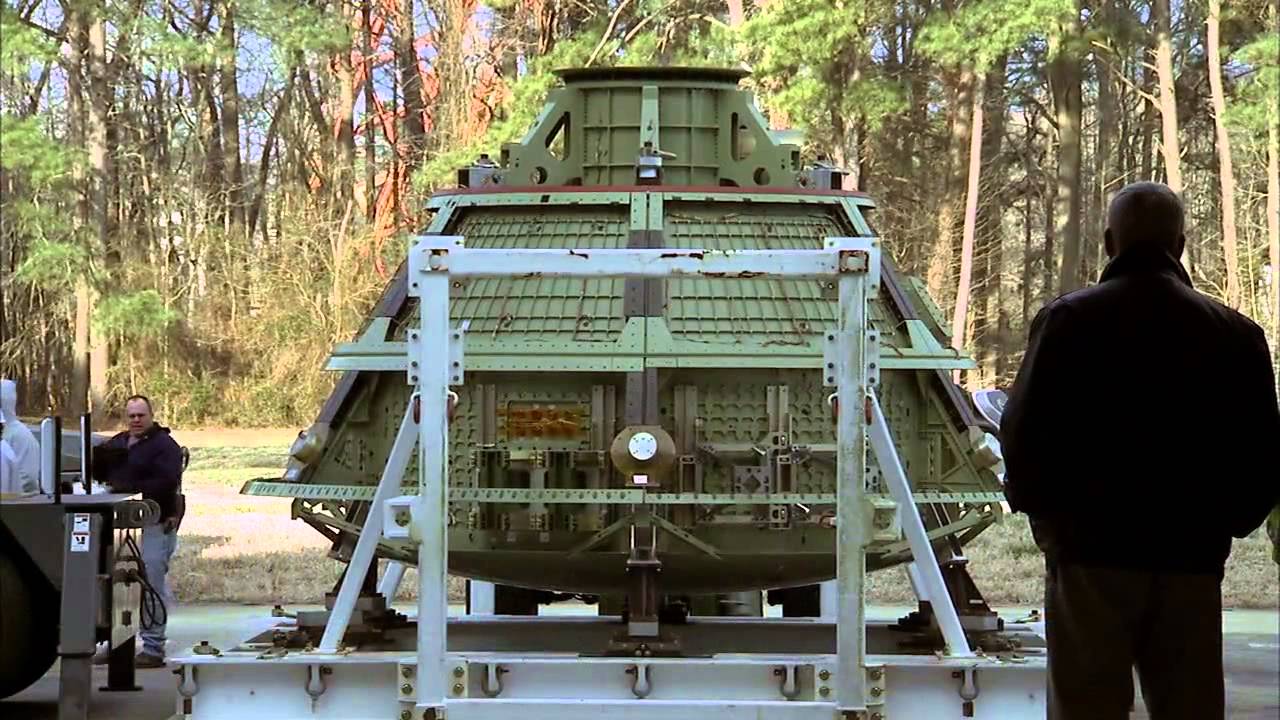more at
Covers 1st quarter 2014 development of the Orion Multi Purpose Crew Vehicle and support facilities and Space Launch System, including spacecraft manufacturing technologies, changes to the Vehicle Assembly Building and Crawler Transporters, parachute and splashdown recovery tests, etc.
Public domain film from NASA.
Orion & SLS playlist:
Orion Multi-Purpose Crew Vehicle (MPCV) is a planned, beyond-low Earth orbit (LEO) manned spacecraft that is being built by Lockheed Martin for NASA, and Airbus Defence and Space for the European Space Agency for crewed missions to the Moon, asteroids and Mars. It is planned to be launched by the Space Launch System. Each Orion spacecraft is projected to carry a crew of 0–6 astronauts.
The MPCV was announced by NASA on May 24, 2011, aided by designs and tests already completed for a spacecraft of the cancelled Constellation program, development for which began in 2005 as the Crew Exploration Vehicle. It was formerly going to be launched by the tested-but-cancelled Ares I launch vehicle.
The MPCV’s debut unmanned multi-hour test flight, known as Exploration Flight Test 1 (EFT-1), is scheduled for a launch aboard a Delta IV Heavy rocket in December 2014 The first crewed mission is expected to take place after 2020. In January 2013, ESA and NASA announced that the Orion Service Module will be built by European space company Airbus Defence and Space for the European Space Agency….
The Orion Crew and Service Module (CSM) stack consists of two main parts: a conical Crew Module (CM), and a cylindrical Service Module (SM) holding the spacecraft’s propulsion system and expendable supplies. Both are based substantially on the Apollo Command and Service Modules (Apollo CSM) flown between 1967 and 1975, but include advances derived from the space shuttle program. “Going with known technology and known solutions lowers the risk,” according to Neil Woodward, director of the integration office in the Exploration Systems Mission Directorate.
The MPCV resembles its Apollo-era predecessors, but its technology and capability are more advanced. It is designed to support long-duration deep space missions of up to 21 days maximum active crew time plus 6 months quiescent. During the quiescent period crew life support would be provided by another module such as a Deep Space Habitat. The spacecraft’s life support, propulsion, thermal protection and avionics systems are designed to be upgradeable as new technologies become available.
The MPCV spacecraft includes both crew and service modules, and a spacecraft adaptor.
The MPCV’s crew module is larger than Apollo’s and can support more crew members for short or long-duration spaceflight missions. The service module fuels and propels the spacecraft as well as storing oxygen and water for astronauts. The service module’s structure is also being designed to provide locations to mount scientific experiments and cargo…
The Space Launch System (SLS) is a United States Space Shuttle-derived heavy launch vehicle being designed by NASA. It follows the cancellation of the Constellation Program, and is to replace the retired Space Shuttle. The NASA Authorization Act of 2010 envisions the transformation of the Constellation program’s Ares I and Ares V vehicle designs into a single launch vehicle usable for both crew and cargo.
The SLS launch vehicle is to be upgraded over time with more powerful versions. Its initial Block I version is to lift a payload of 70 metric tons to low Earth orbit (LEO), while Block IB with the Exploration Upper Stage will lift approximately 93. Block II will replace the initial Shuttle-derived boosters with advanced boosters and is planned to have a LEO capability of up to 155 metric tons, fulfilling the congressional requirement of at least 130 metric tons; this would make the SLS the most capable heavy lift vehicle ever built.
These upgrades will allow the SLS to lift astronauts and hardware to various beyond-LEO destinations: on a circumlunar trajectory as part of Exploration Mission 1 with Block I, to a near-Earth asteroid in Exploration Mission 2 with Block IB, and to Mars with Block II. The SLS will launch the Orion Crew and Service Module and may support trips to the International Space Station if necessary. SLS will use the ground operations and launch facilities at NASA’s Kennedy Space Center, Florida…

